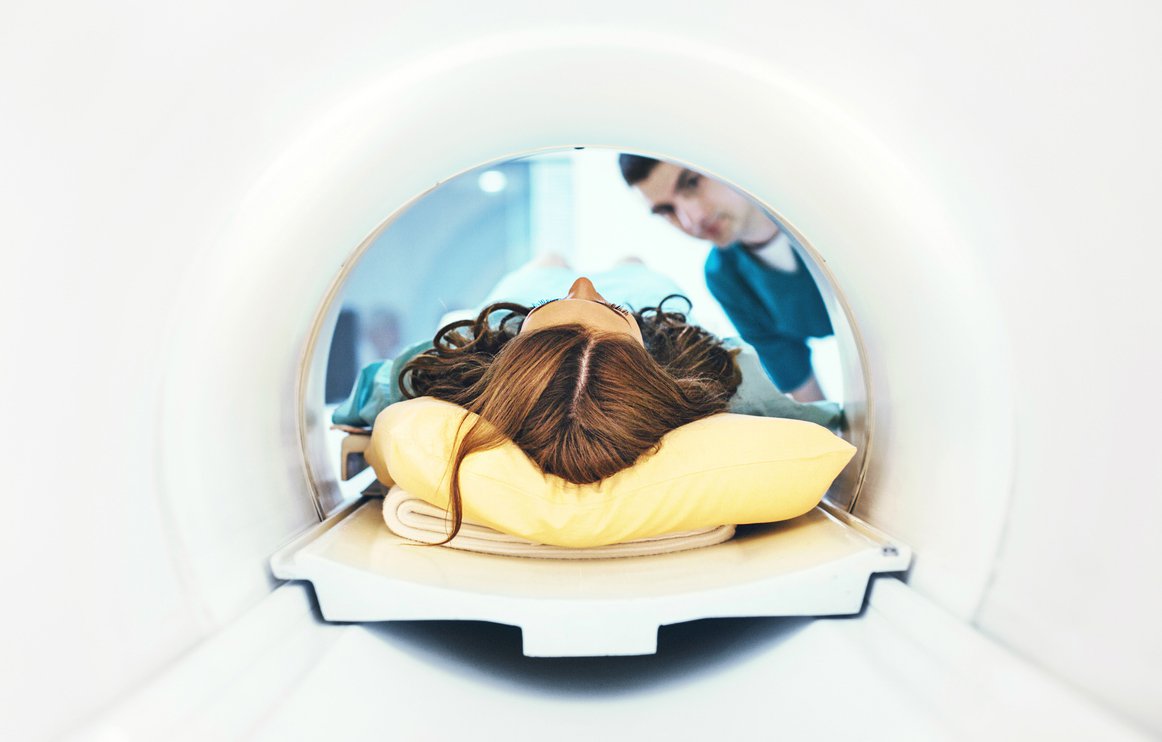Imaging studies always require a good balance between patient comfort and efficacy of the imaging work.
For many years, the only option on the MRI market was a closed bore machine, essentially a tube that patients lie inside. The main problem with these is claustrophobia among patients. For larger patients, it can be very daunting to lie inside a tight metal tube for the exam.
Open bore, also known as an open sided, MRI machine, help to reduce claustrophobia. Instead of lying within a magnetic tube, patients have the relative comfort of openings on one or multiple sides. A key limitation of this is that it may be limited in terms of the imaging that can be done. Imaging may also be of lower quality due to decreased strength of the open machine.
Then we have wide bore MRI machines. This is basically a version of the traditional, closed machine, but with a wider bore that is more comfortable for many claustrophobic patients.
The question we often get is, will bigger always be better? Let’s take a closer look:
Traditional Bore MRI: Pros and cons
A typical closed-bore MRI scanner has a magnetic strength of 1T to 3T, giving it the ability to produce very high-quality images. In fact, image quality on closed systems is often better than the open bore systems mentioned earlier, because those systems tend to have weaker magnets.
Traditional bores are good for a range of different types of studies. Their high clarity makes them versatile. Images are very detailed and allow doctors to make an accurate diagnosis and craft a specific treatment plan for patients. In some cases, the closed-bore MRI will produce higher quality images than an open-bore system due to its higher field strength and more signal available.
As for cons, patient comfort is one of the biggest. The traditional bore is typically only 60 centimeters wide and it feels “closed” to patients. Those who are claustrophobic may not feel comfortable using the traditional machine, while even those who don’t have a phobia may feel uncomfortable. Imaging studies often require 30+ minutes in the machine to get a full scan – this can add to anxiety and discomfort. Some patients get around this by being sedated or anesthetized, but it’s always preferable to avoid doing those things, if possible. Sedation or anesthetic require extra time for administering and recovery – time which patients could spend on other things and imaging centers could spend on doing more imaging.
Another potential drawback is that the bore size may be too small for larger patients. When they require scanning, they may be forced into using an open-bore scanner if there is no wide bore available. In some cases, this can mean that MRI isn’t possible, especially if the imaging needed can’t be done by the open bore.

Wide Bore MRI: Pros and cons
Typical wide bore MRI scanners have a 70 centimeter bore opening and that extra 10 centimeters can make all the difference for many patients. Those who are claustrophobic often find that the wider bore is less stressful than the traditional, narrow bore.
Wide bore MRI scanners also have more headroom than open-bore machines. This amounts to almost a foot more room than open-bore, meaning that any claustrophobic or very tall patients may be better accommodated.
Of course, the wider bore means that larger patients can be scanned. These imagers allow individuals who don’t fit into a traditional bore to receive high quality images. Wide bore scanners can hold up to 550 pounds, which is also a greater weight limit than typical traditional scanners.
This leads us to the question at the premise of this article – is the wider bore always better? The answer is no, not always. While the wider bore can allow for a higher percentage of any given population to be scanned, there may be a trade-off in terms of image quality. When you take image clarity into account, the traditional bore may hold up better. That’s not to say that the wide bore won’t produce a useful image, but that it can be more prone to issues such as artifacts on images.
It is noteworthy that the image quality of the wide bore scanner is still better than the open bore, due to superior signal to noise ratio. If the choice were between wide bore and open bore, and the patient was open to either, wide bore would produce clearer images on many exams (if all things, such as the skill of the technologist were equal!).

Final thoughts
When choosing an MRI system for your facility, it’s important to understand the differences between the types of machines, including what they are best suited to. One thing that can help you to decide is to note the most common use-cases you have and match those against the type of machine that suits them best. Sometimes any will do, whereas other times one type will be superior to another.
You might also consider the patients you usually see. If you have many who are very tall or large, then a closed bore system may not help them. The same goes if you deal with a lot of claustrophobic patients – they may feel more comfortable with wide or open bore.
Finally, of course, you should consider the magnetic strength and the capabilities that come with it too. We wrote an article here on magnetic strength and what you really need for your MRI machine.
